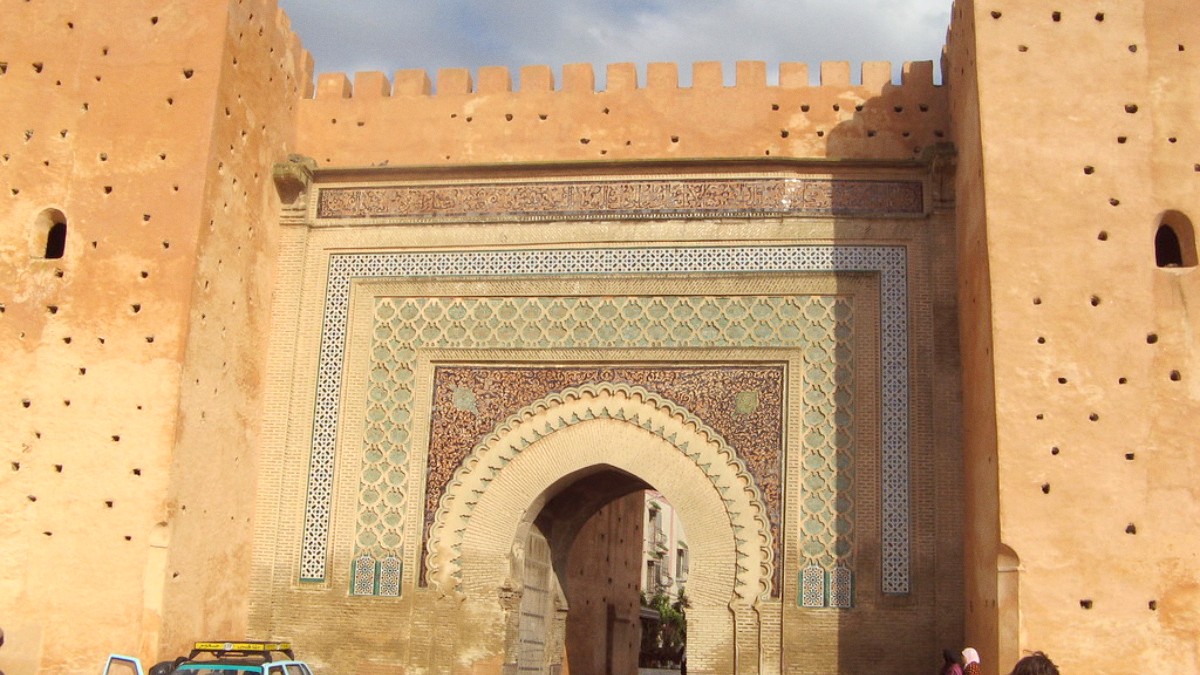
The Mediterranean Coast And The Rif, Morocco
Moroccan cooking uses fresh, local ingredients and many spices. Common proteins are lamb, beef, and chicken. Olives and preserved lemons are staples. Argan oil, honey, and dates are used in both savory and sweet dishes. Vegetables like carrots, zucchini, tomatoes, onions, potatoes, and chickpeas form the base of many tagines and couscous dishes.
Spices like cumin, turmeric, ginger, paprika, saffron, cinnamon, and black pepper are frequent. Ras el hanout, a complex spice blend, adds depth. Fresh herbs like cilantro and parsley are generously applied. Flavors often balance sweet and savory through dried fruits, nuts, and aromatic spices. Meknes, an agricultural region, is known for high-quality local olives and olive oil.
Typically light, with bread, olive oil, honey, olives, eggs, and mint tea. Usually served early.
Often the main meal of the day, eaten between 1 PM and 3 PM. Many families return home for this meal.
Generally later, from 8 PM onwards. It tends to be a lighter meal for locals, though tourist restaurants offer full dinners.
The most iconic Moroccan dish, slow-cooked in a conical clay pot. Varieties include Chicken with Preserved Lemon and Olives, Beef with Prunes and Almonds, or Vegetarian. Widely available in almost all restaurants, local eateries, and riads.
Essential Moroccan staple.
Steamed semolina grains with tender meat (lamb, chicken, or beef) and various vegetables, often topped with an aromatic broth. Traditionally served on Fridays for lunch in homes and most restaurants; some also offer it daily.
Friday tradition.
Tanjia: Slow-cooked lamb or beef in an urn-shaped clay pot (Marrakech specialty, inquire locally). Mechoui: Whole roasted lamb, very tender (for special occasions/groups). Kefta: Spiced ground meat, grilled or in tagine. Brochettes: Grilled meat skewers. These are widely available as street food or in local eateries.
Meat lovers' delight.
Sfenj, Bocadillos (sandwiches with grilled meats/fries), Msemen/Baghrir, Maakouda, Snails (Ghlal), Dates, and various pastries. These are affordable and authentic bites.
Ramadan: Harira soup, Chebakia, and sweet pastries for iftar. Eid al-Adha: Lamb dishes, notably Mechoui, for celebrations.
Often within luxury riads or upscale hotels in the Ville Nouvelle. Refined Moroccan cuisine, sometimes with a modern twist, or international dishes. Reservations are usually recommended.
Numerous options are available in both the medina and Ville Nouvelle. Many riads dinner for their guests and sometimes welcome non-guests by reservation. A comfortable setting and a good selection of traditional dishes are common.
Meknes's street food scene features affordable and authentic bites. Place El Hedim, the souks, and Marche Central are locations.
A bustling local market for fresh produce, spices, olives, and everyday goods. A good place to observe local food culture.
Authentic local insight.
Specific sections within the souks dedicate to food, spices, bread, and sweets. A sensory experience and opportunities to buy fresh ingredients.
Sensory overload, fresh ingredients.
Pizza and pasta dishes for a taste of Italy.
Some restaurants feature French cuisine, reflecting historical ties.
Quick and familiar meals for those desiring a break from Moroccan cuisine.
Most international cuisine restaurants are located in the new city.
Wheat is a staple (bread, couscous, pastries). Tagines cooked without couscous (served with rice if available, or just vegetables/meat) are a safer bet.
Careful choices are important.
Nuts, especially almonds, are common. Shellfish is less common inland. Clear communication of allergies is .
Communicate clearly.
Clearly state any severe allergies. Written notes with specific ingredients to avoid are very helpful for kitchen staff.
Many riads prepare meals to order, which increases the likelihood of them accommodating specific dietary needs. This personalized approach sets them apart.
Meknes is in a rich agricultural region, famous for its olive production and vineyards. High-quality local olives and olive oil are prominent in dishes and as accompaniments.
Opportunities for vineyard visits might be arranged through specialized eco-tourism operators or by inquiring locally. This provides insight into Moroccan wine production.
Food is deeply intertwined with Moroccan culture and hospitality. Sharing a meal is a cornerstone of social interaction.
Frequent hand washing or use of hand sanitizer is advisable, especially when eating street food or before meals.
A simple step for health.
Drink bottled water only. Avoid tap water, even for brushing teeth, to minimize health risks.
Stay hydrated, stay safe.
Locals are often happy to explain dishes or customs. This enriches your dining experience.
Lunch is often the main meal. Dinner is later. Adjusting to local meal times deepens your experience.
Smaller eateries often prefer cash. Larger restaurants and hotels accept cards. Always carry some local currency.
Meknes is renowned for its olives. Be sure to sample various local varieties found in markets and served with meals.